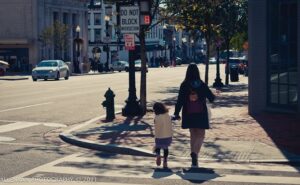 Early in the pandemic I wrote a post about the potential long-term impact of the pandemic on working mothers in the United States. Now, several months later, new studies reveal the following bad news for working mothers:
Early in the pandemic I wrote a post about the potential long-term impact of the pandemic on working mothers in the United States. Now, several months later, new studies reveal the following bad news for working mothers:
- The Bureau of Labor Statistics reports that in the first ten months of 2020, women lost 5.4 million jobs—nearly 1 million more than men. Women of color suffered a higher proportion of these losses overall, and in December 2020, Black, Hispanic, and Asian women suffered all the women’s job losses.
- Vice President Kamala Harris notes in the Washington Post that women in low-wage industries such as hospitality and health care, many of them women of color, have been hit the hardest. She also writes that in February 2020, before the pandemic, around five million women were business owners. By April, one in four had closed their doors for good. The numbers are worse now.
- Gina M. Raimondo and Mary Kay Henry cite in the Washington Post a report from the US Department of Labor in October 2020 showing that of the 1.1 million people age twenty and older who left the workforce between August and September, 865,000, or about 86 percent, were women who dropped out of the labor force. This includes 324,000 Latina women and 58,000 Black women and is more than four times the number of men who dropped out.
- Helaine Olen notes in the Washington Post that a study by the Center for American Progress “revealed one-third of unemployed women under the age of 40—the ‘millennial mothers’—said the reason they were not working was that they needed to mind the children.” Olen points out that “women’s workforce participation rates are now what they were in the late 1980s. Decades of women’s progress at work and at home have been wiped out in a matter of months.”
- Wendy Wagner Robeson at the Wellesley Center for Women cites a recent Lean In study showing that “one in three mothers may be forced by the pandemic to scale back their hours or leave the workforce entirely.”
- Research from the Undefeated Survey on Race and Health found 32 percent of Black mothers say the pandemic has had a major negative impact on their ability to pay for basic necessities like housing, utilities, and food. Pew Research data shows that the number of single Black and Hispanic mothers who are employed fell by nearly twice as much as for single white mothers.
What are the long-term implications of the pandemic for working mothers? The Center for American Progress reports that:
- A thirty-three-year-old woman in the United States with an annual salary of $50,000 stands to lose $571,223 over her lifetime by taking five years off of work for childcare.
- A thirty-three-year-old woman earning $50,000 per year who leaves the work force for five years can expect to lose $157, 704 in retirement assets and benefits, assuming she retires at age sixty-seven.
Helaine Olen points out that because of what’s happened to women’s employment in the pandemic, women twenty-five, forty, and even fifty years from now will be receiving smaller social security checks when they retire.
Raimondo and Henry suggest that going forward, women, particularly women of color, must have affordable pathways to higher-wage industries, subsidized college tuition, paid family leave and sick leave, and affordable quality childcare. Economic recovery depends on parents being able to work and paid a living wage. Now is the time for the United States to get systems in place to support working families. Our economy is badly damaged. Let’s do what it takes to “build it back better.”
Photo courtesy of Ran Allen (CC BY 2.0)